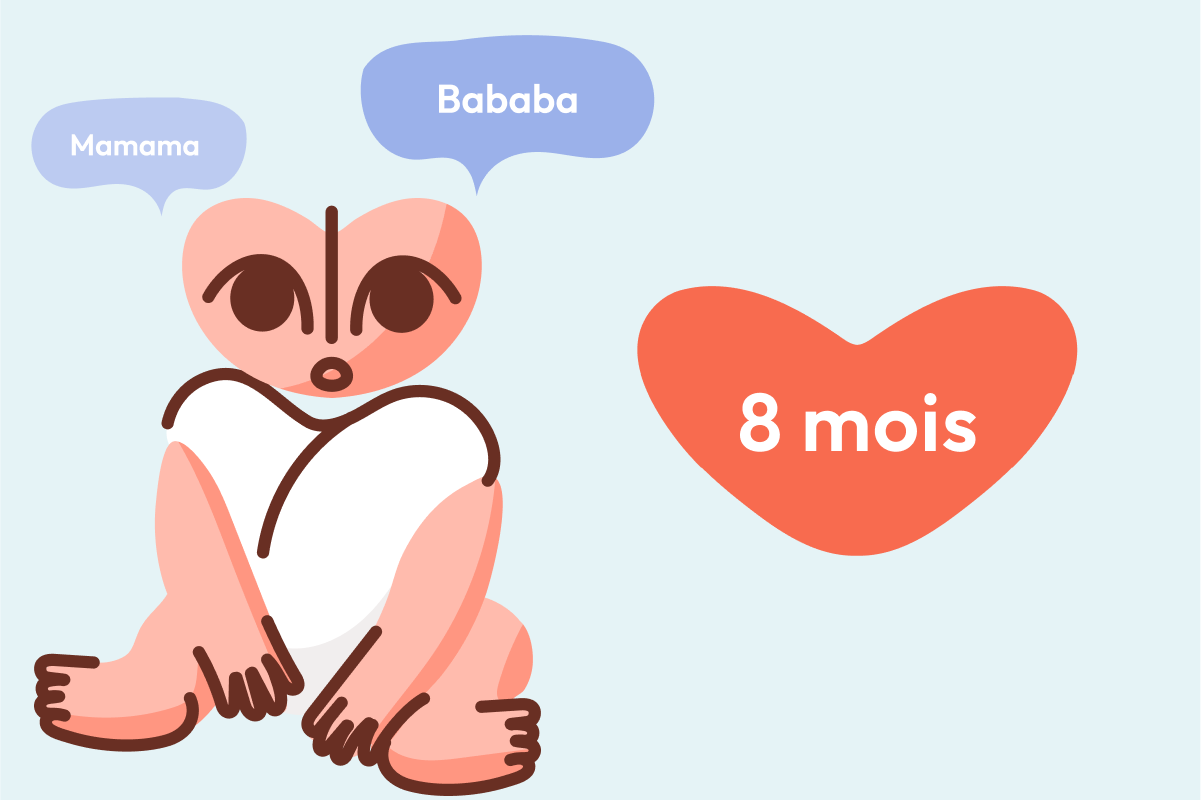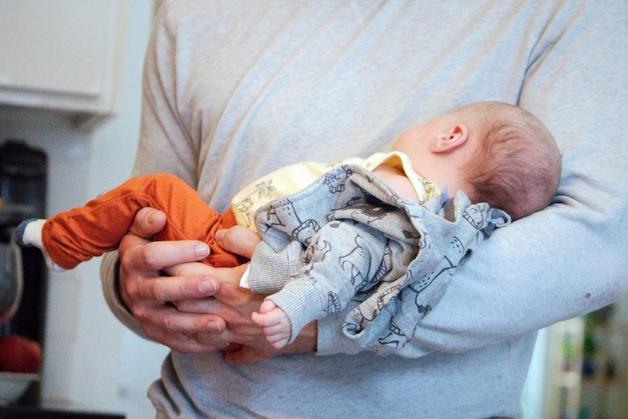Change sweeps every household the moment that tiny pair of hands and feet enters the 8th month—little dozing eyes sparkling with curiosity, daily routines thrown into the whirlwind of growth. Feeding, sleep, playtime, teething woes, safety—questions rush in. Will my 8 month old baby ever crawl? Why are feeds turning into mini-battles? When will “Mama” and “Papa” have meaning? These thoughts keep surfacing, blending hope and fatigue, excitement and worry. This stage brings dizzying mobility, emotional surprises, whimsical eating habits, and restless nights, but also vivid bursts of laughter, new skills, and unmistakable bonds. Here, find what’s genuinely helpful—nuanced, empathetic, and adapted for daily realities. Each concern—nutrition, sleep, play, ensuring health, navigating that wild ride of emotions—deserves a thorough exploration, practical solutions, plus medical know-how.
What to Expect: The Life of an 8 Month Old Baby
Time flies, but for the 8 month old baby, every waking hour is a universe of new sensations and self-discovery. Often able to sit unsupported, many little ones begin attempting those comical, determined crawls, rolling from back to belly (and again, and again!) with astonishing energy. Some are already on the verge of pulling themselves up, fingers white-knuckled around sturdy furniture. Have you noticed the fascination with boxes over actual toys? That’s curiosity in motion—absolutely natural, wonderfully complex.
Not all milestones tick off on a rigid timeline; a touch of patience, hefty encouragement, and watchfulness is fully justified. Growth charts suggest weights ranging from 7.3 to 10 kg and lengths from 64 to 76 cm, but numbers alone don’t define health—look for steady upward trends, activity, and that infectious urge to explore. Structure—predictable mealtimes, naps, and play sessions—deeply reassures your 8 month old baby, offering essential guardrails as each day unveils fresh abilities.
Physical, Cognitive, and Emotional Milestones
Becoming Mobile: Rolling, Crawling, Pulling Up
The physical momentum observed at this age is striking. Many 8 month old babies engage fervently in rolling, some take cautious stabs at crawling, and others are content to shuffle or scoot with enviable determination. As the pincer grasp develops—when the thumb and forefinger unite with precision—babies discover the sheer delight of picking up lint, crumbs, or beads (cue: heightened safety awareness!).
The neuromuscular system, essentially the intricate network between the brain and muscles, underpins these feats. Play mats scattered with toys just out of reach serve a double purpose: entertainment and gross motor advancement. Not every child crawls by the eighth month—no cause for worry. Instead, focus on letting your 8 month old baby attempt, fail, wobble, and try again. That’s how confidence—and strong muscles—grow.
Fine Motor Delights: Grasping, Tapping, Exploring
Give a wooden spoon, watch your child flip it over, pass it between hands, bang it against the floor—a symphony of infancy. This dexterity forecasts the mastery of self-feeding soon! Hand-eye coordination sharpens, encouraged by textured toys, cups, and safe kitchen objects. Watch for the pincer grasp—pick up a crumb with delicate intent—and reward every attempt with a smile.
Cognitive Understanding: Peek-a-Boo and Lightbulb Moments
Peek-a-boo isn’t just playful; it’s an intricate lesson in object permanence. When a rattle hides under a scarf, your 8 month old baby learns things exist even when unseen, igniting both anticipation and joy. Cause-and-effect curiosity explodes—drop the spoon, see you pick it up, drop again, repeat. Each cycle, though dizzying for caregivers, wires the brain for more advanced problem solving.
Repetition, rhythm, and routine build predictability. Patterns—“when Mama sings, it’s naptime”—create a sense of safety. But expect small frustrations, too, when expectations clash with reality (a meal delayed, a toy out of reach). Supporting patience and gentle explanations help build resilience.
Language and Social Bonds: Babbling, Listening, Responding
Babbling rises in frequency—a rolling composition of sounds, shouts, delight. “Ba-ba,” “da-da,” the early echoes of speech, sometimes seem pointed, sometimes utterly random. What matters most is your response: repeat the sound, make eye contact, show genuine interest.
Reading aloud, even to a restless listener, or singing lullabies with exaggerated expressions gives your 8 month old baby invaluable practice with rhythm, tone, and social cues. By now, many children recognise their own name, respond to familiar voices, and participate in simple games of back-and-forth sounds. Impressive, isn’t it?
Emotional Swings: Attachment and Separation Anxiety
Emotional growth might be less visible—but you’ll feel it. Around the eighth month, separation anxiety surfaces. Ordinary departures—leaving the room to fetch water—might bring tears, especially at bedtime. This signals that your child distinguishes between “self” and “parent,” a huge developmental milestone bringing both joy and challenge. Faces become more expressive; laughter and fear flicker across features with greater clarity. Comfort, hugs, and familiar routines are more important than ever. Balancing exploration with secure boundaries soothes little anxieties.
Nurturing Growth: Play, Stimulation, and Daily Structure
Routine—Anchor of the Day
Most families find two to three naps, interspersed with mealtimes and play, balance alertness and fatigue best. Predictability is your secret ally: morning songs, after-lunch cuddles, and evening stories. This scaffolding offers psychological safety for your 8 month old baby, acting as a gentle cue for what comes next.
Stimulating Activities: Toys, Games, and Discovery
Forget expensive gadgets—sensation, movement, and interaction outweigh brand names. Stacking cups, textured balls, cloth books, and kitchen objects (like a safe whisk!) all double as educational resources. Games of hide-and-seek with toys help cement object permanence.
Motivate movement by placing favourites just out of reach; cheer attempts, regardless of outcome. Water play—supervised, of course—offers endless chances for sensory exploration but demands careful attention to safety.
Social and Language Flourishing
Demonstrative narration of daily activities (“Now, we are pouring water!”) intertwines vocabulary with lived experience. Nursery rhymes, books, echo games (“Where’s your nose?” touch nose, encourage copying) build the linguistic framework step by step. Not all responsiveness comes in words—sometimes, it’s a sparkle in the eyes or a reaching hand.
Health, Medical Guidance, and Safety
Monitoring Wellbeing: Common Health Issues
Curious why your 8 month old baby suddenly tugs their ear or seems grumpy? Ear infections (otitis media) frequently arise at this age. Medical signs—constant ear pulling, irritability, fever—warrant professional attention and treatment. Prevention? Gently dry ears after each bath, maintain hygiene (handwashing, saline nasal cleaning), and spot changes in behaviour early.
Digestive challenges, like constipation or reflux, tend to peak with dietary shifts. If stools are hard or the baby is fussier post-meal, try adding pureed fruits (rich in fiber), offering water with solids (up to 120ml/day), and providing gentle tummy rubs. Should discomfort persist, consultation with a healthcare provider is advised for tailored strategies.
Baby-Proofing: Creating a Safe Haven
Once that 8 month old baby starts moving, the home transforms into an obstacle course. Safety gates, outlet covers, cabinet locks, and anchored furniture protect new explorers. All small or sharp objects—anything fitting within a toilet paper roll—are definite hazards. Choking prevention is paramount; inspect toys for size, integrity, and detachable parts each day.
Safe Feeding Practices and Toys
Strict vigilance during meals and play is essential. Avoid hard, round, or sticky foods—such as whole grapes, pieces of raw carrot, nuts, uncut sausages—as these increase choking risks. Age-appropriate toys (bright, textured, larger than a closed fist) ensure playtime remains both fun and safe.
Secure Travel: Car Seats, High Chairs, Outings
Travel and outings demand extra preparation. Always secure your child in a rear-facing car seat, use five-point harnesses, never leave the baby unattended in high chairs or near roads, and check stability and position often. For outdoor adventures, light but robust clothing, hydration, and break times make for joyful, stress-free trips.
Easing Teething Discomfort
Irritability, drool, midnight waking—teething announces itself with little flair but ample fuss. Medical consensus suggests chilled (not frozen) teething rings to soothe swollen gums. Excessive discomfort? Paracetamol (as prescribed), gentle massage, and consulting your paediatrician for persistent pain are wise measures. Tooth eruption varies enormously; some children celebrate one-year birthdays with a gummy smile, others flash several teeth much earlier.
Feeding and Nutrition for 8 Month Old Baby
Still the Foundation: Breast Milk and Formula
Up to 24–32 ounces of breast milk or formula daily remains the nutritional anchor for the 8 month old baby. Spaced at intervals of 3–4 hours, these feeds underpin immunity and overall growth. Iron is especially important now—a drop in stores around this age means it’s time to spotlight iron-rich foods.
Welcoming Solids: What, When, How
Three to four solid meals a day, timed consistently, introduce a palette of flavours and textures. Iron-fortified cereals, mashed pulses, soft-cooked, diced veggies, and fruits—these should dominate the plate. Soft proteins (cooked egg yolk, chicken, fish, beans) may be offered in pea-sized, smoothly textured pieces. Vegetarian families take note: pulses, paneer, and lentils—with medical supervision—support healthy, well-rounded diets.
Finger foods—avocado cubes, ripe bananas, tiny cooked pasta shapes—encourage self-feeding, though patience will be tested as more hits the floor than the stomach. Rejection of new foods isn’t a setback; it’s a normal phase of sensory learning. Routine introduction (three to five times before acceptance), creativity in preparation, and a calm environment (free from digital screens) transform tension into discovery.
Water: How Much, When, Why
Hydration still relies heavily on milk, but small sips of water (up to 120 ml per day) can be offered with meals. This gently moonlights as practice for open-cup drinking and reduces constipation risks. Heavy water intake isn’t recommended—tiny kidneys fare best with measured exposure.
Sample Day Plan
- Breakfast: Iron-fortified cereal mashed with banana or pear
- Mid-morning: Breast milk or formula
- Lunch: Mixed veggie purée with soft protein (bean mash/egg/chicken)
- Afternoon: Milk/formula
- Dinner: Mashed vegetables, rice/pasta, fruit pieces, paneer/cheese
- Bedtime: Milk/formula
Consistency—not rigidity—is comforting; adjust portions and timing to appetite and family routine.
Allergies: Prevention and Monitoring
Each new food should be introduced individually, waiting at least three days before adding another. Observe for hives, swelling, vomiting, breathing issues—if spotted, consult the paediatrician immediately. Family history alters risk but does not guarantee outcome; doctor guidance is always the best first step.
Sleep Patterns, Tips, and Gentle Troubleshooting
Sleep Needs and Settling Patterns
An 8 month old baby typically requires 12–14 hours sleep per day, with night stretches and two daytime naps lasting one to two hours each. Signs of fatigue—eye rubbing, crankiness—signal nap time far more reliably than the clock.
Nighttime Routines and Comfort
Evening routines—a warm bath, hushed lullaby, a favourite story—solidify the sequence from alertness to slumber. Predictability acts as a cue for winding down. Bedtime resistance, especially with separation anxiety at its peak, dissolves gradually with comforting rituals.
Safe Sleep Environment
Always position the baby on their back, in a firm, bare crib without pillows, soft toys, or blankets. A bare sleep space, confirmed by countless paediatric recommendations, dramatically cuts the risk of suffocation and sudden infant death syndrome (SIDS).
Sleep Regression and Night Wakings
If your child suddenly wakes more—teething, skill acquisition, or emotional milestones may be the culprit. These phases, called sleep regressions, pass more smoothly when routines stay consistent and reassurance remains gentle but firm.
Boosting Confidence and Supporting Parental Wellbeing
Safe and Stimulating Spaces
Baby-proofing transforms the home into an inviting, worry-free wonderland, ripe for crawling adventures. Age-appropriate toys, varied textures, and lots of floor freedom (with a responsible eye from you) enhance learning without risk.
Encouraging Independence and Self-Feeding
Celebrate each small accomplishment. Let your 8 month old baby try feeding themselves, reach for cups, and move independently—with a safety net of supervision and encouragement. Building autonomy now blossoms into confidence later.
Structure: A Source of Comfort
Predictable meal and nap times not only simplify caregiving but also reassure your child, especially during waves of new sensations or unexpected upsets.
Outings and Travel: Packing for Adventure
When the urge for adventure beckons, remember your new toolkit: fitted car seat, lightweight stroller, diaper bag with essentials, snacks, spares, a favourite toy, and lots of wipes. Map feeds and nap times into your travel to avoid meltdowns. Stay vigilant—quick stops for stretching and playful engagement ensure outings remain cheerful.
Safe Outing Reminders
Use carriers and strollers correctly, sanitize hands and surfaces as required, shun crowds when possible, and keep all essentials within easy reach.
Parental Self-Care: Balancing Care and Rest
Caring for an 8 month old baby, in truth, can be both exhilarating and draining. Take short breaks—listen to your favourite music, sip chai in peace, step outdoors when the opportunity arises. Accept support, delegate chores, share with fellow parents when possible. Mental and physical renewal are not indulgences—they are necessities for sustained nurturing.
Key Takeaways
- The 8 month old baby thrives with safe spaces, daily rituals, and plenty of motivation to explore new milestones at their own rhythm.
- Consistency, patience, and attentive cue-reading during mealtime, play, and sleep support healthy growth and joyful learning.
- Preventive medical care, diligent baby-proofing, and knowledge of normal variations in development dispel anxiety and empower you in practical ways.
- Every stage—each first roll, babble, or taste—adds meaning, whether celebrated loudly or observed in the quiet moments.
- Professional advice is always within reach for developmental concerns, health issues, or nutrition questions.
- Download the application Heloa for personalised advice and free child health questionnaires, whenever you seek guidance beyond these lines.
Questions Parents Ask
What should I do if my 8 month old baby isn’t crawling yet?
Development unfolds at its own pace—some babies bypass crawling entirely, mastering rolling or bottom scooting first. If your 8 month old baby eagerly explores toys, pivots during tummy time, or shows signs of trying to move, progress is on track. Offer frequent supervised floor play, place enticing toys just out of reach, and cultivate a secure space for experimentation. If you notice delays in sitting, hand use, or social responsiveness, reach out to your paediatrician for a tailored, reassuring perspective.
Is it normal if my 8 month old baby still has no teeth?
Teething timelines are anything but predictable. Some infants erupt their first tooth at four months, others only after their first birthday. For the 8 month old baby, toothless gums are within the spectrum of normal. If gum discomfort troubles your child, a cool (never frozen) teething toy offers relief. The sequence of tooth emergence doesn’t impact ultimate dental health—patience and gentle support are the best companions.
How much water is safe to give my 8 month old baby?
Primary hydration continues through breast milk or formula, but around 8 months, modest quantities of water—up to 4 ounces (roughly 120 ml) daily—can be offered, mainly with solid foods. Any substantial increase is best avoided, as immature kidneys handle large volumes poorly. Should you remain uncertain or have concerns regarding fluid intake, consulting your paediatrician is a sound step.
By embracing both science and sensitivity, parents cultivate not just the healthy body of their 8 month old baby, but a confident, joyful spirit with each passing day.
Further reading:









